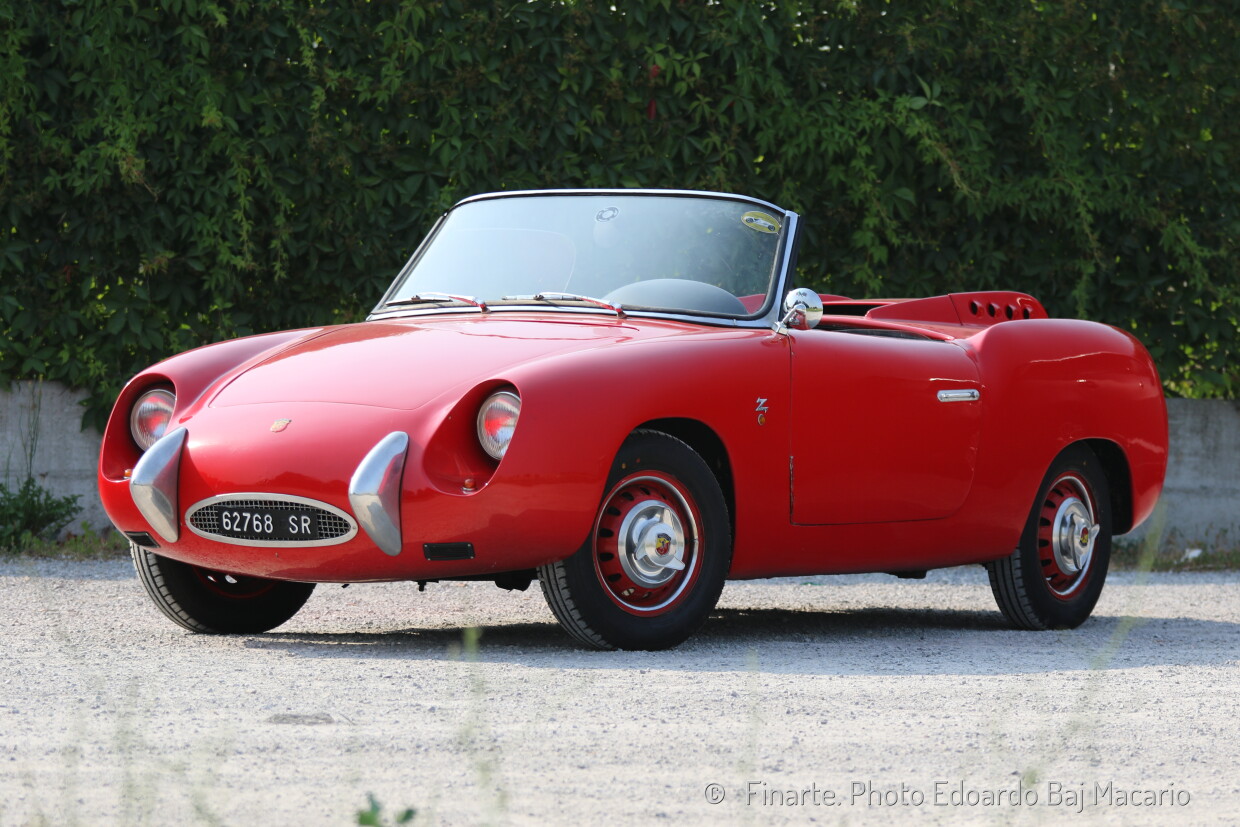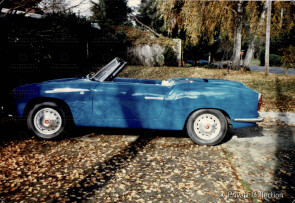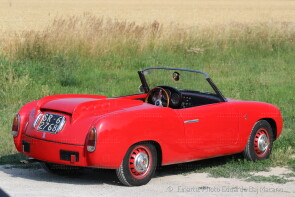
1958 Fiat Abarth 750 Spyder
ON/OFF
Why am I an Automotive Masterpiece?
The Fiat 600 was presented in March 1955 at the Geneva Motor Show and simultaneously in all European capitals as well as in Casablanca (Morocco), a major international launch. With the Fiat 600, joining the Fiat 1100 and Fiat 1400, the Turin factory actually goes into mass production. The Fiat 600 is a compact two-door, four-seater sedan with an engine-clutch-gearbox-transmission and differential placed longitudinally and rearward, with the engine cantilevered on the rear axle. It features an in-line four-cylinder petrol engine, initially of 633 cc, air-cooled, capable of 21.5 hp at 4,600 rpm and of a torque of 4 mkg at 2,800 rpm. The gearbox is manual 4-speed, with the first not synchronized. The maximum speed is close to 100 km/h.
Abarth began producing induction and exhaust systems and evolved into selling performance kits for - mainly FIAT - production cars, later building a number of aerodynamically stylish sports prototypes and limited-series production cars. One of Carlo Abarth's flagships, often sided by the talent of brilliant coachbuilders, were the GT cars based on the FIAT 600. The first of the little Zagato-bodied coupés - the 750 - appearing in 1956. The 600 chassis was used with scant modification, yet despite this it coped well with the Abarth’s greatly increased performances. These latter were achieved by boring and stroking the 633cc engine to 747cc and modifying or replacing just about every other component, the result being an increase in maximum power from 23 hp at 4,000 rpm to 44 hp at 6,000 rpm. Tested by The Autocar magazine in 1958, the Abarth Zagato 750 GT scorched through the standing quarter-mile in 20 seconds on its way to maximum speed of over 150 km/h, outstanding figures for such a small-engined car. Its makers were aware of the potential market for a Spider version, and the first one was exhibited at the 1957 Salone Internazionale dell’Auto di Torino. A second - different - car was shown the following year, but the production of the coupes by Zagato was very demanding and the Abarth decisions seemed to favor Allemano for the spider. Only 3 cars of the 1958 Spyder Zagato, each one different for some detail, seem to be ever built.
The Fiat Abarth 750 Spyder, chassis no. 100519476, is most likely the car shown at the 1958 Salone Internazionale dell’Auto di Torino, in the Abarth stand. It is somehow a one-off car, since is the only one of the three similar cars existing, with a peculiar feature: a combination of aerodynamic fins extending from the cockpit to the tail, joined to the so called “castelletto”, a bulge on the rear bonnet, useful for making space and for cooling the engine. The car was registered for the first time in January 1959 in Messina and enjoyed the warm and dry Sicily climate for several years. It changed plates twice: from the first ME27265 to ME59732, due to a loss, and then to SR62768. This Siracusa plate from 1968 was still on the car in 2019. The history of this car is traced, and it was owned by a well-known collector and historian of Zagato. The car, in excellent condition, has had, in unspecified times, interventions that have modified some of its features, but it is equipped with a lot of documentation and several correct spare parts. It is currently fitted with a Fiat-Abarth 847cc engine (type AB214), much more powerful but not original, in good working order.




